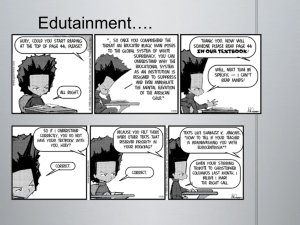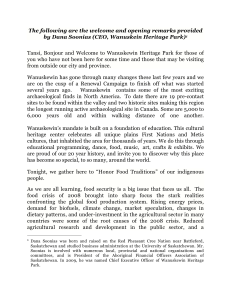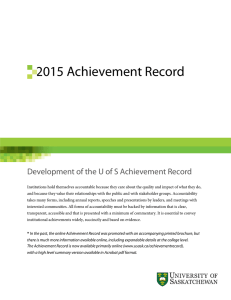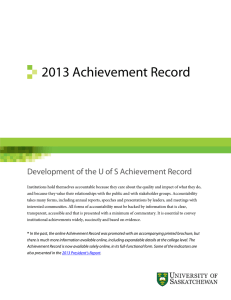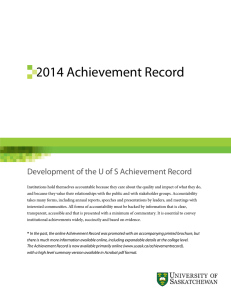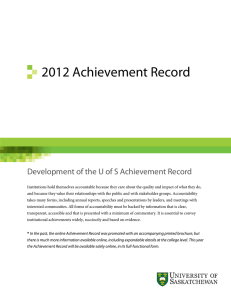Curriculum as Place
advertisement
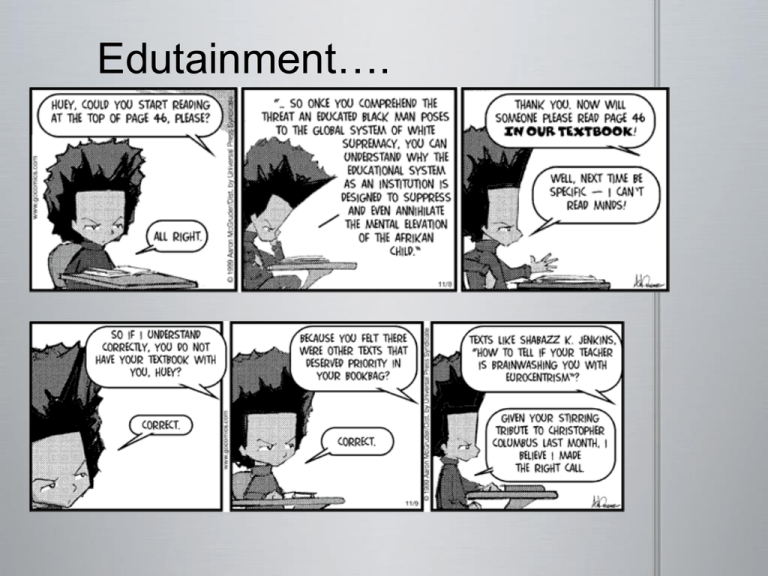
Edutainment…. ECS 210 October 16th 2015 Formal, mandated, hidden, intended, null, place, as taught, as lived, as experienced… Everything that Happens. Curriculum as Product, as Process, as Praxis A Saskatchewan Story – Schools with racism at their core. “Curriculum Politics” Politics, Policies, Curricula What is taught, when, to whom, by whom. Curriculum as Place Curriculum is… - Curriculum as Place Northrop Frye (1971) claims that for Canadians the answer to the question "Who are we?" cannot be separated from the answer to the question "Where is here?”(p. 220). The classic existential question "Who am I?" -can be posed only by people for whom "where" they are is not an issue, the place itself apparently being fully known and well defined. Curriculum as Place Curriculum as Place Questions to consider: Who does the teacher get to be here? ------------------------------------------------- How might this curriculum of place produce teachers and learners? a focus on “supporting Aboriginal identity”; developing, “knowledge, positive attitudes and cultural understanding”; an emphasis on “positive images of First Nations, Métis and Inuit peoples”; a focus on “identity development” of Aboriginal youth; and a call to teach Aboriginal students in a manner “compatible with [students’] backgrounds and learning styles.” Curriculum as Place The language of Native Studies 10(Saskatchewan Education, 2000) Curriculum as Place Questions to consider: Who does the teacher get to be in these frameworks? ------------------------------------------------- What does the official curriculum make possible or impossible in this place? Students will be able to explain the factors that made economic transition difficult. Students will be able to synthesize the impact of residential schools on family life. Curriculum as Place Students will be able to understand the harmful effects of forced change. Who does the teacher get to be? ------------------------------------------------------ What does the official curriculum make possible or impossible in this place? Curriculum as Place Questions to consider: Curriculum as Place First day Story It was the first day of my new job as a high school English teacher in Punnichy Saskatchewan. My experience with Aboriginal peoples was limited. My desire to be in this place was not however, and as a way to actualize this desire, I had a plan. On my first day of school, I was going to drive through George Gordon First Nation. This was the first time I had ever been to a reserve and I thought it appropriate to start my time in this place with a show of solidarity. The trip through the reserve would add about 10 minutes to my trip. There was a lot of gravel road driving. My senses were very alert, I mean this was my first time on a reserve, and I was coming to teach students that lived here… I needed to be awake and aware, learning from what I was seeing; starting to make some sense of the context I was going to be teaching in. As I entered Gordon’s from the South, I started to catalogue what I saw – houses, distances between, stuff in the driveway, the conditions of cars, the upkeep of places, some ‘very nice’, gables and horses and satellite dishes and some not so nice – boarded windows, unkempt lawns, big, old rusted cars on blocks. Cars and trucks would pass me on the road, and almost every person waved a friendly greeting. Cowboy hats on heads, dream-catchers hanging from rearview mirrors, each one waving with one hand lifted slightly off of the steering wheel. She looks friendly, he looks nice, a little big, maybe he has diabetes, wow was she old and wrinkled, nice truck…. I was driving past the gas station / grocery store and saw a large truck and a really large Native man filling gas. I hope I don’t get stuck right here, that guy might try and steal my car. Pardon? Did I think that? Where the hell did that come from? There is no rational reason to think that. But I did. But I’m not racist. But why would I think something like that? As I continue driving down the road towards school, I argue with myself about my thoughts. Who does the teacher get to be? ------------------------------------------------------ What happens when we combine this teacher and this curriculum in this place? Curriculum as Place Questions to consider: Kumashiro - Discomforting Learning - What might it look like to teach and learn in ways that trouble this dominant knowledge? What could you hear, if I called myself instead… I am a committed anti-racist? Switching gears For seminar – use your blog to record and respond to the following prompts: The article suggests that a “critical pedagogy of place” aims to: (a) identify, recover, and create material spaces and places that teach us how to live well in our total environments (reinhabitation); and (b) identify and change ways of thinking that injure and exploit other people and places (decolonization) (p.74) 1. List some of the ways that you see reinhabitation and decolonization happening throughout the narrative. 2. How might you adapt these ideas to considering place in your own subject areas and teaching?
